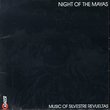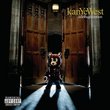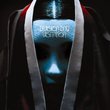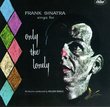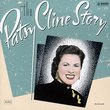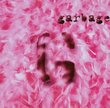| All Artists: Lee Hoiby, John Harbison, John Musto, Ned Rorem, William Bolcom, Alan Marks, Fred Hersch, Kurt Ollmann, Steve Blier, William Parker Title: Aids Quilt Songbook Members Wishing: 0 Total Copies: 0 Label: Harmonia Mundi Fr. Release Date: 6/14/1994 Genres: Jazz, Special Interest, Pop, Classical Styles: Avant Garde & Free Jazz, Vocal Jazz, Vocal Pop, By Decade, 1990s, Historical Periods, Modern, 20th, & 21st Century Number of Discs: 1 SwapaCD Credits: 1 UPC: 093046760229 |
Search - Lee Hoiby, John Harbison, John Musto :: Aids Quilt Songbook
 | Lee Hoiby, John Harbison, John Musto Aids Quilt Songbook Genres: Jazz, Special Interest, Pop, Classical
|
Larger Image |
CD DetailsSimilarly Requested CDs
|
CD ReviewsExcellent CD for it's place in history D. Plummer | Madison, WI United States | 01/10/2002 (4 out of 5 stars) "This is a great CD. I'm glad I was able to find it used. Not all of the singing is to my liking but overall it's very nice. What is extremely good is the interpretations of each song. Each performers commitment to the text is worth whatever price you pay." Collective Identity and Music of AIDS Activism Ian Lincoln | Dayton,Ohio | 11/04/2008 (5 out of 5 stars) "Collective Identity and Music of AIDS Activism
By: Cassy Boff 2006 In order for a social movement to exist, there must be a group of like minded people united through a common identity. These people must have similar goals which then lead to collective action in an attempt to meet these goals. When examining a wide variety of social movements, we often see that this collective identity is achieved largely through the use of music because music is an easy way to spread ideas through the lyrics while also tapping into an emotional realm. Individual members of movement groups can then listen to the songs and relate to them personally, thus bolstering the sense that all members are in similar situations, facing similar struggles, and fighting for the same goals. Once this collective identity has been established, it sets a social movement in motion. However, when we examine the case of AIDS activism in the late 1980's and early 1990's, it is clear that music did not play a large role in creating the collective identity needed to launch the movement. Instead, music was a result of the collective identity that had already been established through the shared experience of dealing with AIDS, which the movement used to raise greater awareness about the disease to outsiders. Because Acquired Immunodeficiency Syndrome (AIDS) severely impairs the human immune system, the physical symptoms of AIDS were ones which people suffering with AIDS and their loved ones could all relate to, helping create a collective identity. As a result of its damage to the immune system, the body becomes susceptible to many other infections and diseases that that body would normally be able to handle (Smith 1998:2). For example, many people with AIDS quite often developed colds or the flu accompanied by fever that would last for extensive periods of time. As AIDS continues to spread throughout the body, many later symptoms also begin to take shape. Common symptoms which can occur up to several years after a person is initially infected include loss of energy, significant loss of weight over a short period of time, fevers and sweats that occur frequently, increasing shortness of breath, and periods of continued deep, dry coughing. In addition, there can be intense feelings of pain or lack of sensation in the feet and hands, as well as a decrease in muscle control (You and AIDS 2006). Most people who were involved in AIDS activism either personally experienced these symptoms, or had friends or loved ones who were suffering from them. Therefore, the painful physical symptoms and the knowledge of the dreadful effects on the body became a basis for collective identity among AIDS activists. However, AIDS activists were also united in collective identity through the shared understanding of the difficult social and mental conditions associated with AIDS which outsiders were apathetic to or could not fully comprehend. Because the harmful nature of the disease and its symptoms are somewhat harder to detect than with many other diseases, many were unaware of its existence or downplayed its severity. People within the movement were united by the fact that they understood the difficulty of trying to successfully function socially in everyday society. Often it was too difficult, and many became apathetic and began to withdrawal themselves from the social scene. Finding love was also a challenge because in order to assure that AIDS was not spread, intimacy often had to be sacrificed. Many times, this led to loneliness and depression among people suffering with AIDS. Even those who did not suffer with AIDS themselves were directly affected by this as they watched their loved ones experience slow personality changes, sometimes even accompanied by mental deterioration and short term memory loss (You and AIDS 2006) Also, outsiders often had misconceptions about AIDS and were afraid to go near people with AIDS, afraid they could catch it. Within the movement, members formed collective identity through the fact that they could sympathize with the challenges of functioning socially in the midst of depreciating health conditions. Overall, the collective identity achieved through the shared experience of dealing with AIDS both physically and mentally acted as a catalyst to launch the activist movement. Because there was a common group of people aware of the pain and difficulty of dealing with the disease, they soon became united in action to make society more aware of the epidemic and demand the government take action. This action centered on challenging the government to do more to fight AIDS including a speedier release of AIDS and AIDS related drugs. With a solid collective identity already established, groups like the AIDS Coalition to Unleash Power (ACT UP) used direct action tactics and began to stage protests and marches. Now that the movement had been established, this collective identity remained intact as members constantly remembered they were fighting to help save or elongate the lives of themselves or their loved ones. Unlike many other movements which used music throughout their protests and rallies to bolster collective identity, AIDS activism already had a strong sense of collective identity and did not begin using music until the movement was already in full swing. "Beginning in the early 1990s, a good ten years after the publicly recognized outbreak of HIV, recordings of music written clearly and explicitly in response to AIDS began to emerge" (War 1998: 352). However, one of the most widely recognized and significant musical responses to AIDS was The AIDS Quilt Songbook. William Parker, a leading American baritone diagnosed with AIDS, commissioned composers to write songs which addressed HIV and AIDS either directly or metaphorically. Parker had been involved with AIDS benefits for quite some time but noticed that the music was not directly related to the pandemic (Ward 1998: 353). As a singer himself, he once commented, "For singers, we are being pretty unvocal about AIDS" (AQS 1993: iii). Yet this all changed with the premiere of the AIDS Quilt Songbook at Lincoln Center's Alice Tully Hall on June 4, 1992. Here, Parker shared the stage with famous American baritones Kurt Ollmann, William Sharp, and Sanford Sylvan who performed the song cycle for a large audience (AQS 1993: iii). Music in the AIDS activism movement, especially The AIDS Quilt Songbook, was used to raise awareness about the epidemic to those outside the movement who were unaware of its severity. Parker explained people's attitude towards AIDS in an interview saying, "Unless it's your brother or your lover, leave it to the health-care professionals. People just don't want to know" (Kellow 1992: 41). When questioned about the goals of these works, Parker explained, "I guess what we're trying to do with The AIDS Quilt Songbook is to make people aware that the compassion you would normally reserve for a family member, you now extend to strangers" (Kellow 1992: 42). The songbook was composed by eighteen different people, four of whom were people living with AIDS, with spanning perspectives from black, white, Latino, gay, straight, male, and female. Set to texts by American poets, some of the songs deal only metaphorically with AIDS, but most confront the painful details of the disease and the havoc it wreaks in the life of the individual (AQS 1993: iii). Parker hoped that the songs would place a "personal stamp on the ravages, confusion, and injustices of HIV" (Ward 1998: 353) thus giving people who were not experiencing it directly an up close and personal perspective. Moreover, the use of music like the AIDS Quilt Songbook not only helped to raise awareness about AIDS in general, but it gave a detailed view of what it was like to deal with AIDS, thus helping gain support for the activist cause. As a review of the recording goes to show, "Mostly through narratives, the songs address such themes as alienation, loneliness, regret, and injustice. They present stories of everyday people struggling to cope with personal loss, mortality, and the myriad of emotions that accompany the presence of HIV in a person's life" (Ward 1998: 353). For example, John Musto's "Heartbeats" describes the deterioration of a person in the final stages of AIDS. "I Never Knew" by Ricky Ian Gordon shows the grief and regret of gay men who saw freedoms taken away with the onset of HIV (Ward 1998: 354). Each song has a personal touch, and not only the words themselves, but the melodies can evoke deep emotions in people who may have had no idea that this was going on. By giving a personal touch to the lyrics and tapping into an emotional realm through the music itself, people not only become aware of what AIDS is really like, but are also led to want to take action to stop it, and therefore become a part of the activist movement. Overall, the collective identity needed to launch AIDS Activism was gained through the shared experiences of dealing with AIDS on both a physical and mental level. Those people who had the disease could now identify with others who were suffering from it, and unite to fight against indifference to the epidemic and also demand a search for a cure. This collective identity spurred collective action so that something could be done to assist the people struggling with the disease and put a stop to its spread. It was not until the movement had already been in existence for a few years that music came onto the scene in order to help raise awareness about AIDS to those outside of the movement and, in turn to help gain support for the activist cause. "The AIDS Quilt Songbook was written with the clear purpose of naming the virus along with its social as well as personal and medical complications in contemporary life" (Ward 1998: 353). Composers today continue to add new works to the songbook. By using this means, people who were not necessarily experiencing the difficulty of AIDS could gain a perspective on what it was like, and in turn elicit sympathy. The case of AIDS activism proves that music is not essential in forming collective identity, but instead can be used as a tool to raise awareness and gain support for a cause once a solid collective identity has already been established and acted upon. References The AIDS Quilt Songbook. 1993. New York: Boosey & Hawkes, Inc. Kellow, B. 1992. "Art in the Age of AIDS." Opera News 56(17): 40-42. Smith, Raymond A., Ed. The Encyclopedia of AIDS: A Social, Political, Cultural, and Scientific Record of the HIV Epidemic. 1998. Fitzroy Dearborn Publishers. Ward, Keith. 1998. Recording review of The AIDS Quilt Songbook: Songs by William Bolcom, Elizabeth Brown, Carl Byron, Chris DeBlasio, Ricky Ian Gordon, John Harbison, Fred Hersch, Lee Hoiby, David Krakauer, Annea Lockwood, John Musto, Ned Rorem, Donald St. Pierre, Richard Thomas, Donald Wheelock. Harmonia Mundi France 907602, 1994. From American Music 16(3): 351-357. You and AIDS. 2006. "About HIV/AIDS-Symptoms." Retrieved Nov. 25, 2006. (http://www.youandaids.org/About%20HIVAIDS/Symptoms). " |

 Track Listings (15) - Disc #1
Track Listings (15) - Disc #1
